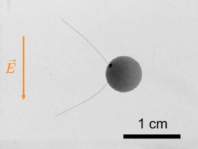Han Lab @ NTU
Experimental Soft Matter and Biophysics

Research Projects
The future research of our lab focuses on the mechanics of active and living matter. The two major directions are: (i) collective motion of bacteria and mechanics of bacterial biofilms; (ii) artificial active fluids and solids. Both directions are built on a common basis - developing and exploiting state-of-the-art experimental and data processing techniques.

Collective motion of bacteria
A normal fluid becomes turbulent when flowing very fast and solidifies as the temperature decreases (e.g. in glass transitions). Such chaotic or jammed regimes have been observed in colonies of cells as well, but the underlying physics is still poorly understood. My lab develops advanced experimental platforms that enable direct measurements of virtually all the relevant variables, including nematic order, polar order, mechanical stress, cell velocity, cell concentration, etc. This allows us to test existing theories and seek a systematic understanding of the collective motion of bacteria.

Measure mechanical stress in living systems
Bacteria rely on mechanical forces to achieve many biological functions, such as locomotion, attachment, and aggregation. At the same time, they actively sense their ambient environment and respond to mechanical cues. To understand certain behaviors of bacterial colonies or biofilms, accurate measurements of these forces are crucial from the scale of an individual cell to the whole structure. My lab develops experimental and data processing tools that better visualize biological systems, quantify their internal mechanical stress, and characterize their material properties such as elastic modulus and viscosity.

Artificial active materials
By pumping energy into an otherwise inert system, one can create artificial active matter with unique material properties such as odd viscosity and odd elasticity. Relevant research not only leads to exciting new physics but also has potential applications in materials science and robotics. To make a robotic hand pour a glass of water, one could control all its 20-ish degrees of freedom individually. However, for an advanced soft robot like T-1000 in Terminator 2, which has thousands and millions of degrees of freedom, a similar approach simply does not work. A proper understanding of the constitutive relations of active fluids and solids is crucial in designing and controlling such systems.